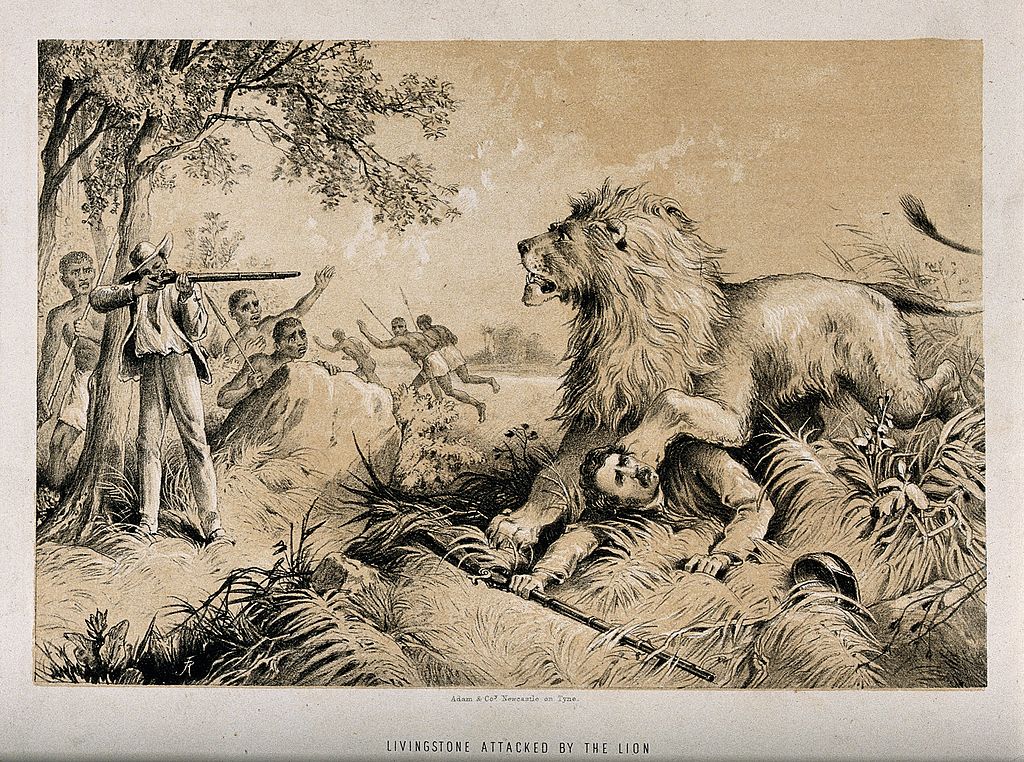The Daring Heart of David Livingstoneby Jess White
4 April 2018 In life and death, the journeys undertaken by David Livingstone were nothing short of inspirational. He opened the door to Africa when he discovered the Victoria Falls, and he continued to wander far beyond the entrance. Livingstone's diaries, letters and reports create a thrilling narration of his life, from the harrowing tale of his narrow escape from a lion's wrath, to his discovery of the brutal slave traders. For thirty years he explored the African continent, quite literally redefining the map of Africa along the way. David Livingstone left this world known as an exceptional explorer, but that is far from the way he entered it.
It was 1813, and a baby boy was born into a working class family living in Glasgow, Scotland. It was a difficult time, and at the age of ten years old, Livingstone and his siblings were working 12 hour days, six days a week, in large industrial factories. Most of his formal education took place in Sunday School, where the first hint of his formidable determination came to light. With the savings from his first paycheck clutched in his little fist, Livingstone ventured into a bookstore. The following Monday morning he was toiling away in the factory, now with a book propped up against his spinning jenny. In the midst of the chaos in the factory, this young boy was teaching himself Latin. This earned him a place at university where he studied medicine and trained to be a missionary. In 1814 he arrived in Africa where he met his mentor Robert Moffat, but it was Moffat's daughter Mary who first captured the brave heart of Livingstone. The two devout missionaries were soon married, and had six children together, two of which Livingstone delivered himself. When Livingstone discovered the Victoria Falls, he was awe struck by its sheer beauty, writing that these were sights so lovely; they must have been gazed upon by angels in their flight. He informed the world of the smoke that thunders, and was catapulted to fame. After the immense success of this expedition, Livingstone had little trouble convincing the British government to support his wildly optimistic plan to return to Africa and put steamboats onto the Zambezi River. However, five years and 100 000 pounds later, he had not made it further than three hundred miles up the river before he was halted in his tracks by the cavernous Cabora Basa Gorge. Times were tough as animosity between crewmembers grew, and their search for a navigable river started to appear futile. As they chugged along the Zambezi at a painfully slow speed, the voyagers noticed objects littered throughout the water, bobbing between them and the shore. To their horror, they realized that these were the bodies of slaves who had not survived the trek to the coast, and were thrown haphazardly into the water as though a human life were as disposable as a used container. By now, conditions on the boat had deteriorated to a point where men aboard were swiftly dying as malaria reared its ugly head once the medical supplies ran out. Tragically, Mary too died from the disease, and a grief stricken Livingstone buried his wife on the banks of the Zambezi. The expedition was deemed a failure, and the government quickly recalled the team. With a broken heart and a tarnished reputation, Livingstone returned to England where he tried desperately to inform the press and government that slavery still raged throughout East Africa. However, his failed mission haunted him, and no one would listen. Driven by his unwavering Christian faith and the determination to expose the atrocities of slaves trade, Livingstone volunteered his services to the Royal Geographic Society, secretly planning to uncover the truth about what was happening in East Africa. When he returned to Africa, he realized that is was no longer safe to travel unless he joined a larger convoy. The problem lay in the fact that every other traveller was involved in the transportation of slaves. He had no choice but to immerse himself in the operation, meticulously detailing everything he saw. With ink he made from berries, Livingstone documented the unspeakable horror of the slave trade. Just one of the heart stopping moments he witnessed occurred when three Arab slavers armed with guns entered a market in Nyangwe, where 1,500 people are gathered, most of them women. From fifty yards away, shot after dreadful shot sounded through the air, killing hundreds of people, many of which were women. Screams echoed from the other side of the river, as others watched as their friends and family were slain. Livingstone wrote letter after letter to the British government, sure that they would intervene. However, at that stage the only way to get letters to the coast was through the slave traders, who knew he was a threat to their business. They destroyed all the letters. They intended to isolate him from the outside world, and ensure that he took their secret to the grave. Meanwhile, people in England were beginning to wonder what had come of the once famous Dr. Livingstone. The New York Herald eventually sent one of their journalists, Morton Stanley, to find Livingstone. When he finally does, he approaches the 60-year-old white male seated in a rural village, and utters the famous words, "Dr. Livingstone I presume?" With dozens of detailed notes documenting everything that Livingstone has witnessed, Stanley returns home, where he publishes a series of articles, putting the story of the slave trade on the front page of every major newspaper. At long last, Livingstone's efforts to end the slave trade were realized and the British parliament passed laws that abolished the slave markets of East Africa forever. Sadly, he did not live to see that he had achieved his goal. The legislation was signed into law just ten days after he died. Instead of returning with Stanley, Livingstone decided to stay in Africa to complete his assignment from the Royal Geographic Society. However, after weeks of marching through swampland against gale winds, and spending bitterly cold nights on sodden earth, Livingstone finally collapsed. His porters carried his limp body to a nearby village, desperate to escape the swamp. Late that night, Livingstone's life long journey drew to a close. Even after his death, Livingstone was still part of one of the most incredible voyages that the world has ever witnessed. Chuma, Susi, Wainwright and Wellington preserved Livingstone's body by rubbing salt on it and leaving it in the sun for two weeks. They decided that, despite the potential charges of witchcraft, which carried an automatic death penalty, they would return Livingstone's body to his home across the sea. In their culture, when somebody dies, their spirit remains on earth to watch over their family. They knew that Livingstone could not do this if his body was on the other side of the world, and they feared that he would spend the rest of eternity wandering the earth trying to find his way home. Before they began the treacherous journey, they cut out his heart, which they knew belonged to Africa, and buried it beneath a tree. They then carried his body 1500 kilometres back to the coast, claiming it was bundled clothes when confronted by villagers. The journey took nine months, and six men lost their lives along the way, but the men never faltered. When asked why, they simply said, "He is a great man and must be buried among other great men". Livingstone had once said, "If you have men who will only come if they know there is a good road, I do not want them. I want men who will come if there is no road at all." He could not have asked for more loyal or brave men than the four who eventually saw him home. In honour of Livingstone's legacy, a church was built on the foundations of the former slave market in Zanzibar. When, years later, they heard that the tree beneath which Livingstone's heart was buried had died, wood was collected from the remains and fashioned into a cross. This very cross hangs in that church today, beside the altar that sits on the site of the old whipping post of the slave market. One of the most famous quotes by Livingstone states, "I am prepared to go anywhere provided it be forward". If only he knew that he took the rest of the world forward with him.
Return from The Daring Heart of David Livingstone to our home page |
|
||
|
|
|||
|
|
|||
|
| |||




